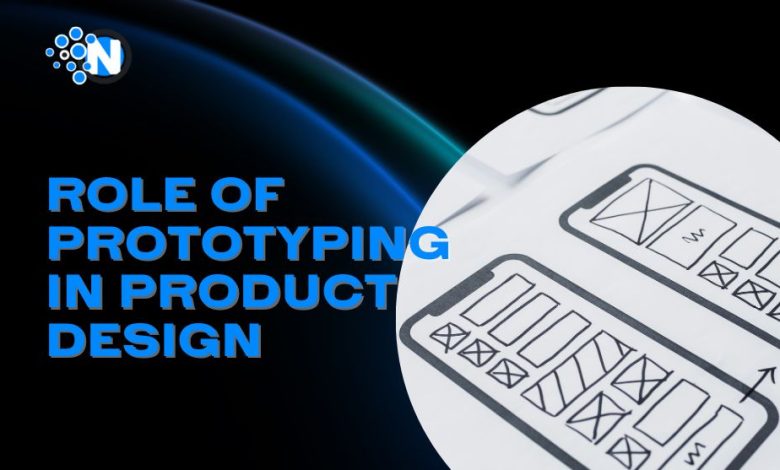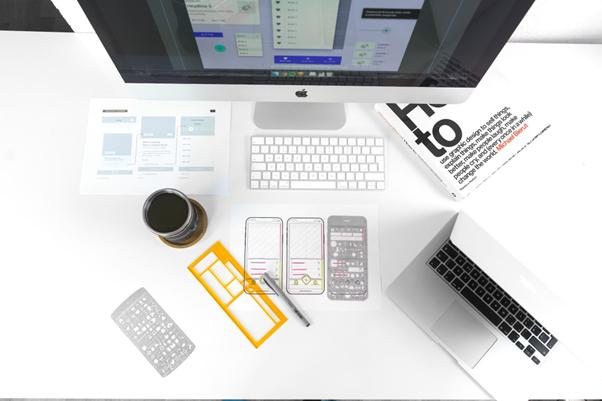The Vital Role of Prototyping in Product Design Agency Work

In the dynamic world of product design, where agencies are entrusted with the mission of transforming ideas into tangible, user-centered products, prototyping stands as a cornerstone of success. Product design agencies play a pivotal role in this process, serving as hubs of creativity and innovation. Prototyping stands out as an indispensable asset among the myriad tools and techniques available to them.
In this article, we will discuss the indispensable role of prototyping within the framework of a Product Design Agency and explore its many advantages.
Understanding Prototyping in Product Design Agencies
Prototyping in product design agencies involves creating a visual and functional representation of the final product. It serves as the compass that guides agencies, clients, and development teams through the intricate process of product creation. Here’s why prototyping is paramount in this context:
1. Translating Client Vision into Reality
In the agency-client collaboration, clients often bring forth a vision for their product. Prototyping empowers agencies to translate this vision into a tangible model that clients can see and interact with. It bridges the gap between client concepts and the agency’s design expertise, ensuring that both parties share a common vision from the very beginning.
2. Enabling Iterative Collaboration
Prototyping is the heartbeat of iterative collaboration between the agency and the client. It serves as a canvas for continuous feedback and refinement. Clients can interact with the prototype, provide input, and witness firsthand how their suggestions are implemented. This collaborative approach ensures that the final product aligns seamlessly with the client’s goals and expectations.
3. Minimizing Miscommunication
Misunderstandings between an agency and a client can result in costly revisions down the line. Prototypes serve as a visual reference that minimizes the risk of miscommunication. Clients can see precisely how the product will look and function, reducing the likelihood of misunderstandings and ensuring that the project stays on the right track.
4. Showcasing Design Prowess
For product design agencies, showcasing their design prowess is often essential in winning client projects. High-fidelity prototypes become the agency’s canvas to exhibit their design capabilities. These prototypes exemplify attention to detail, user-centric design, and a polished user experience, all of which resonate profoundly with potential clients.
5. Resource Efficiency
Prototyping contributes to the efficient allocation of resources. By identifying design and functionality issues early in the process, agencies can circumvent the allocation of resources to address these issues during full-scale development. This translates to cost savings and ensures that resources are allocated optimally.
6. Showcasing Innovation to Stakeholders
In many cases, product design agencies work with external stakeholders, such as investors, clients, or potential partners. Prototypes serve as powerful tools for showcasing innovation and securing support. A well-crafted prototype can effectively convey the vision, potential, and value proposition of a product. It allows stakeholders to experience the product firsthand, making it easier to garner enthusiasm and investment.
Read Also: Tips to Promote a Software Product Online
7. Elevating User Experience
User experience is the linchpin of product design. Prototyping allows agencies to fine-tune the user experience by testing user interactions, navigation flow, and usability. This refinement yields a more intuitive and user-friendly final product, which is pivotal for client satisfaction.

8. Winning New Projects with Conviction
Prototypes are invaluable in winning new projects with conviction. When presenting ideas to potential clients, agencies can craft prototypes that showcase the envisioned product’s features and functionality. These prototypes become persuasive instruments that demonstrate how the agency’s design philosophy aligns perfectly with the client’s needs and objectives.
9. Testing Mechanical and Functional Aspects
Beyond aesthetics, prototyping plays a crucial role in assessing a product’s mechanical and functional aspects. Physical prototypes allow engineers and designers to evaluate a design’s structural integrity, durability, and performance. This includes testing components, mechanisms, and materials to ensure they meet the desired specifications and standards. Any identified issues can be rectified before moving into production, preventing costly and time-consuming modifications.
10. Guiding the Development Process
Prototypes assume the role of a blueprint for product development. They provide developers with a clear and comprehensive reference for constructing the final product. This accelerates development and minimizes the likelihood of discrepancies between the design and development teams.
11. Streamlining Production and Manufacturing
Prototyping is not solely a design and testing phase; it also informs the production and manufacturing processes. Detailed prototypes serve as references for manufacturers, guiding them in replicating the design accurately and efficiently. This alignment between the prototype and production phases reduces the likelihood of discrepancies, delays, or costly modifications during manufacturing. It streamlines the transition from design to mass production.
Types of Prototypes in Product Design Agencies
Product design agencies utilize various types of prototypes to cater to different project needs. Here are some common types:
- Low-Fidelity Wireframes: Low-fidelity wireframes are basic sketches that outline the app’s layout and structure. They are excellent for early ideation and concept validation.
- High-Fidelity Prototypes: High-fidelity prototypes offer a polished representation of the final product. They include design elements such as colors, typography, and interactive components like buttons and forms.
- Interactive Prototypes: Interactive prototypes allow users to interact with the app’s interface as they would in the actual product. This level of interactivity provides valuable insights into the user experience and usability.
- Paper Prototypes: Paper prototypes involve sketching app screens on paper and manually simulating interactions. They are a cost-effective way to test ideas quickly.
Ending Note
In the realm of a product design agency, prototyping is not just a tool; it’s the compass that guides clients and teams toward successful product creation. It’s the bridge that connects visions with reality, the canvas that facilitates iterative collaboration, and the showcase of design prowess. Prototyping is the strategic asset that empowers product design agencies to excel in delivering remarkable results to their clients, ensuring that every project becomes a success story.




